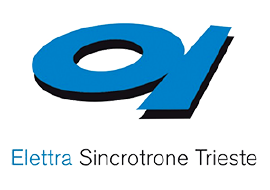THE APE-HE APPARATUS FOR XAS/XMCD/XPS IN UHV CONDITIONS
APE-HE end station for XAS/XMCD/XPS measurements is a UHV chamber equipped with a 4 axis manipulator and an hemispherical electron energy analyzer. It is built as a vibration-free sample chamber with mu-metal shielding for reducing the background H-field. The sample manipulator allows X-Y scanning on the surface with 1 micrometer precision and is therefore suitable to perform experiments on microstructures. The sample environment allows for temperature control (He-flow cryostat and heating stages) with feedback, for H-field application in the surface plan up to 0.1 T and for E-field application up to 500 V between contacted surfaces and substrate. The total electron yield (TEY) detection is achieved by measuring the drain current with a high sensitivity electrometer through highly shielded connections, or with an in vacuum electron multiplier. The total fluorescent yield (TFY) detection is achieved by an in-vacuum photodiode. Continuous scanning of the monochromator for XAS spectra is available for superior speed. Step-by-step scanning is also available and used to perform highly sensitive XMCD while switching the in-plane magnetization of the sample at each point.
Two independent electrical connections on the measuring position of the sample allow applying electric bias during or in-between the measurement. The possibility of combining electric and magnetic fields allows studying the chemical and magnetic behaviour of multiferroic materials and heterostructures.









